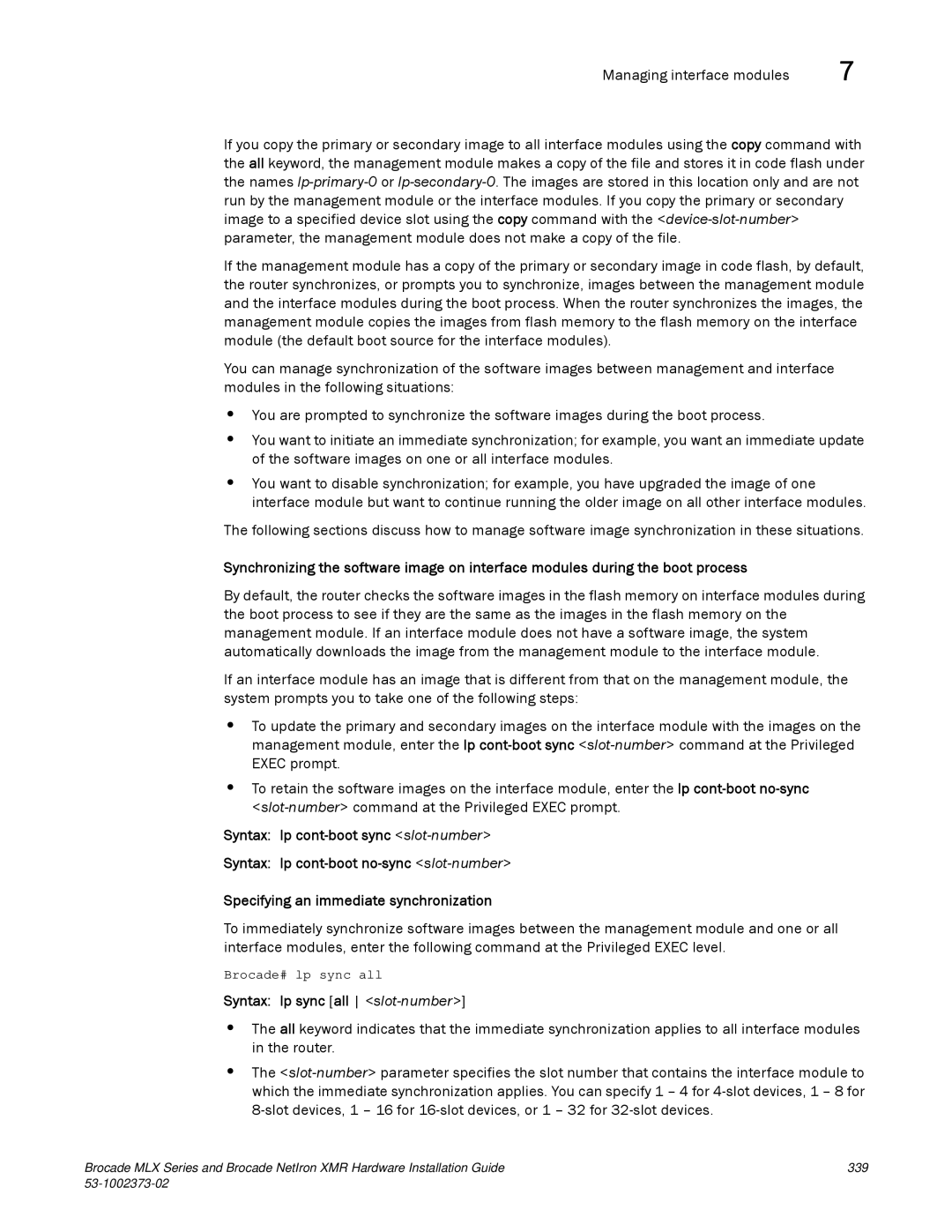Managing interface modules | 7 |
If you copy the primary or secondary image to all interface modules using the copy command with the all keyword, the management module makes a copy of the file and stores it in code flash under the names
If the management module has a copy of the primary or secondary image in code flash, by default, the router synchronizes, or prompts you to synchronize, images between the management module and the interface modules during the boot process. When the router synchronizes the images, the management module copies the images from flash memory to the flash memory on the interface module (the default boot source for the interface modules).
You can manage synchronization of the software images between management and interface modules in the following situations:
•You are prompted to synchronize the software images during the boot process.
•You want to initiate an immediate synchronization; for example, you want an immediate update of the software images on one or all interface modules.
•You want to disable synchronization; for example, you have upgraded the image of one interface module but want to continue running the older image on all other interface modules.
The following sections discuss how to manage software image synchronization in these situations.
Synchronizing the software image on interface modules during the boot process
By default, the router checks the software images in the flash memory on interface modules during the boot process to see if they are the same as the images in the flash memory on the management module. If an interface module does not have a software image, the system automatically downloads the image from the management module to the interface module.
If an interface module has an image that is different from that on the management module, the system prompts you to take one of the following steps:
•To update the primary and secondary images on the interface module with the images on the management module, enter the lp
•To retain the software images on the interface module, enter the lp
Syntax: lp
Syntax: lp
Specifying an immediate synchronization
To immediately synchronize software images between the management module and one or all interface modules, enter the following command at the Privileged EXEC level.
Brocade# lp sync all
Syntax: lp sync [all <slot-number>]
•The all keyword indicates that the immediate synchronization applies to all interface modules in the router.
•The
Brocade MLX Series and Brocade NetIron XMR Hardware Installation Guide | 339 |
|
|
